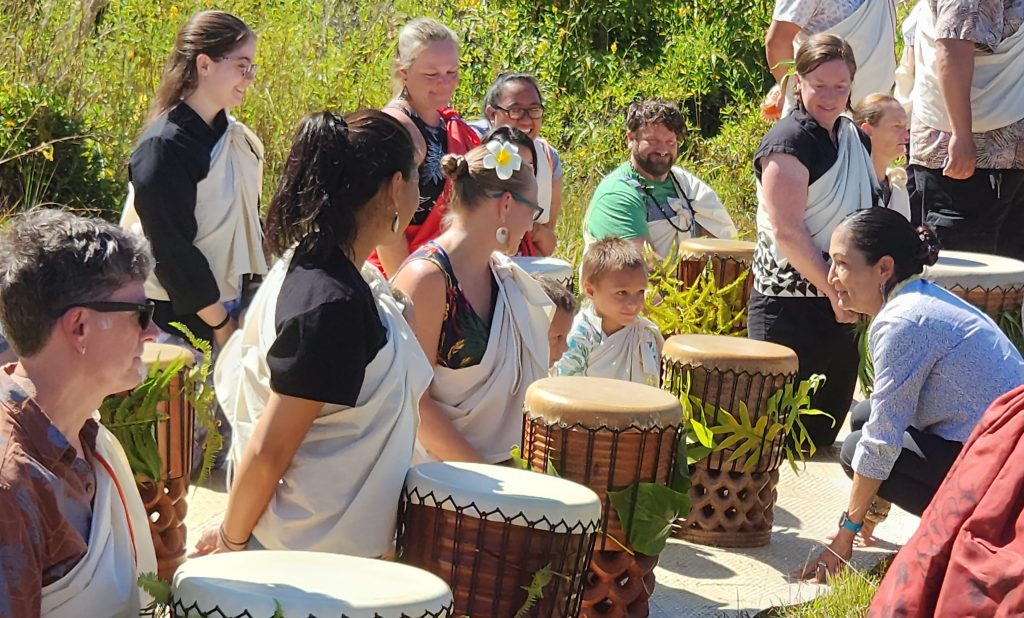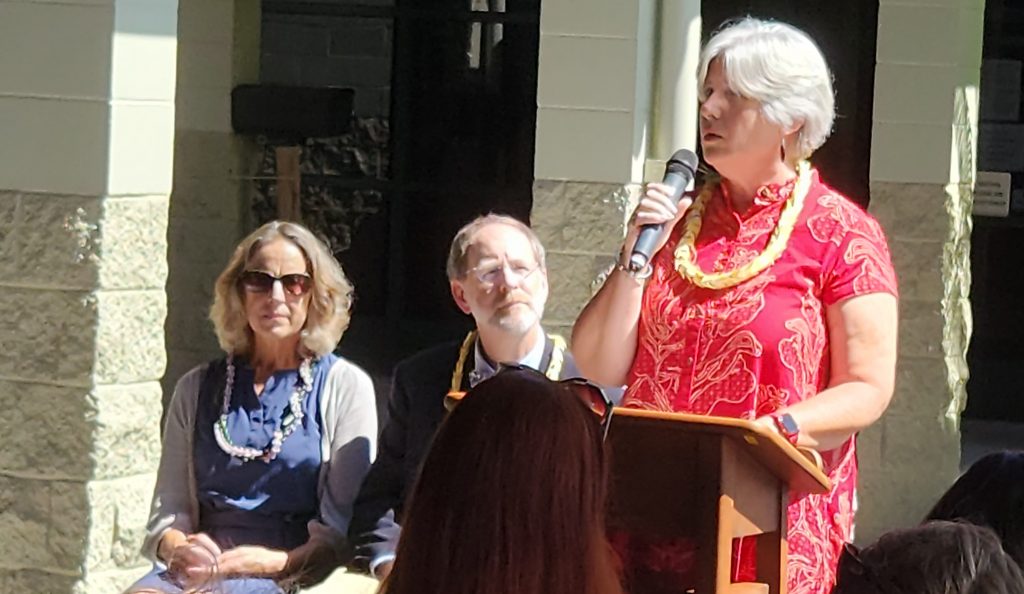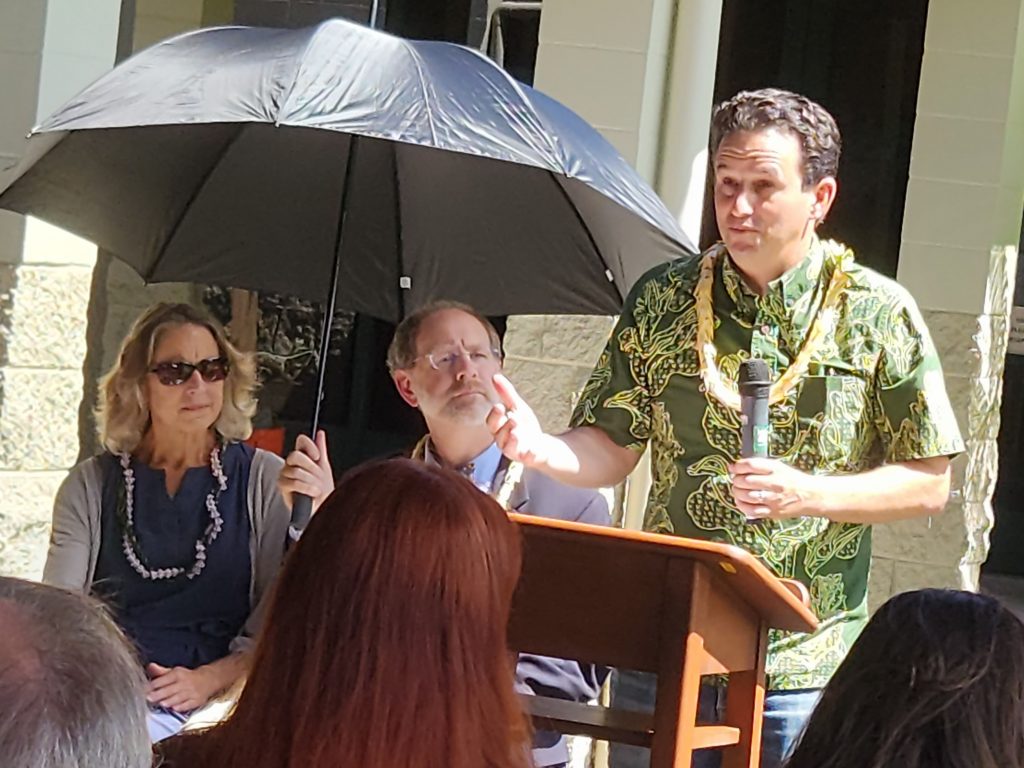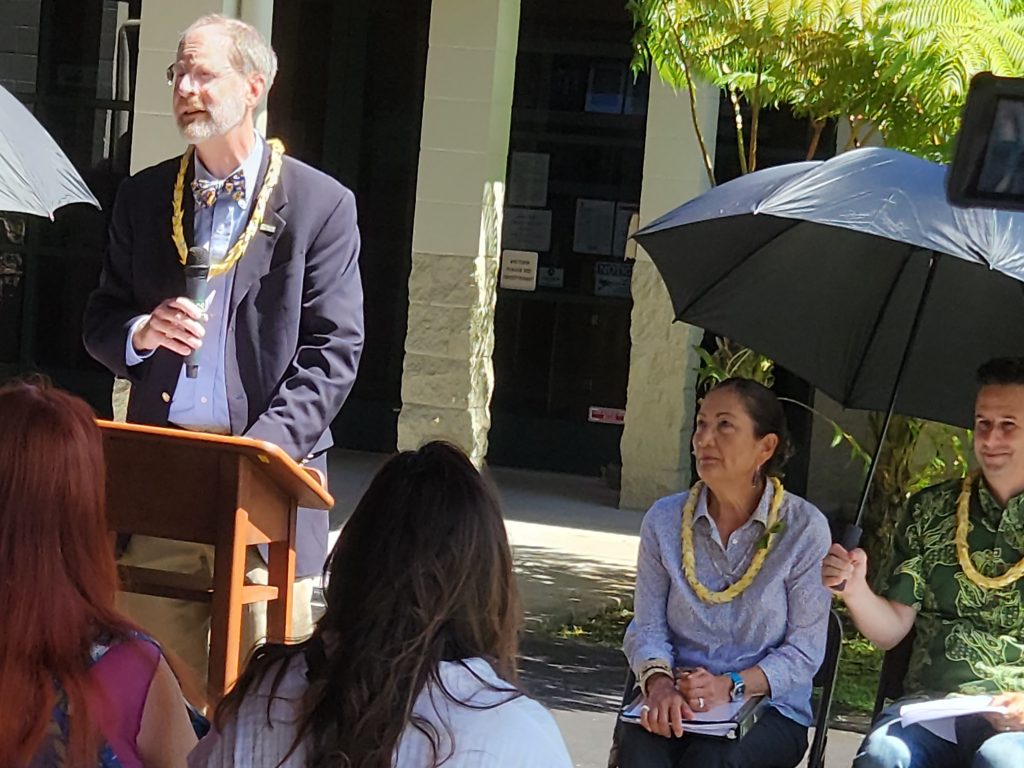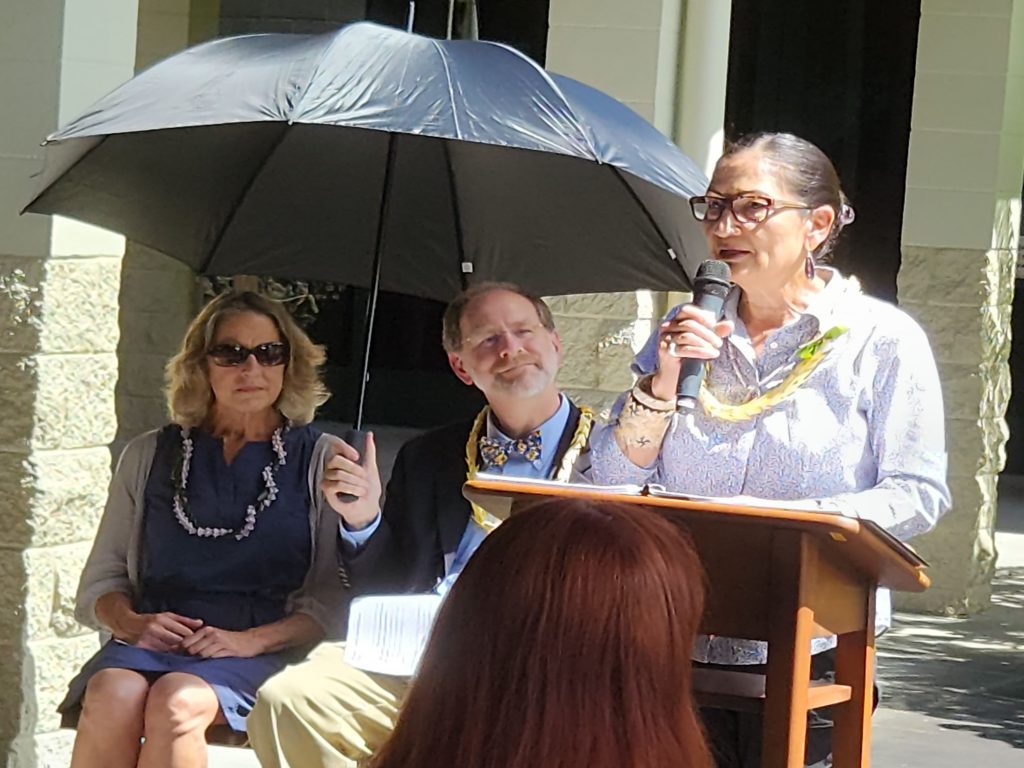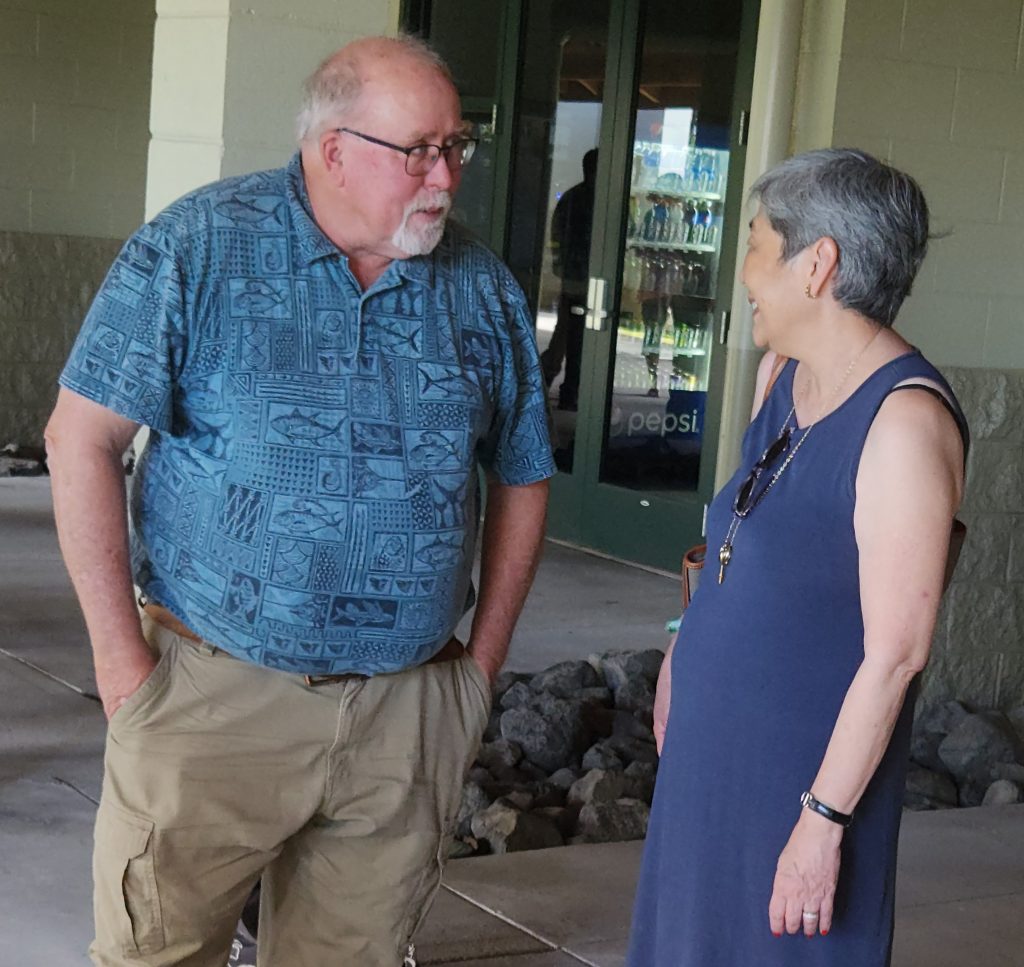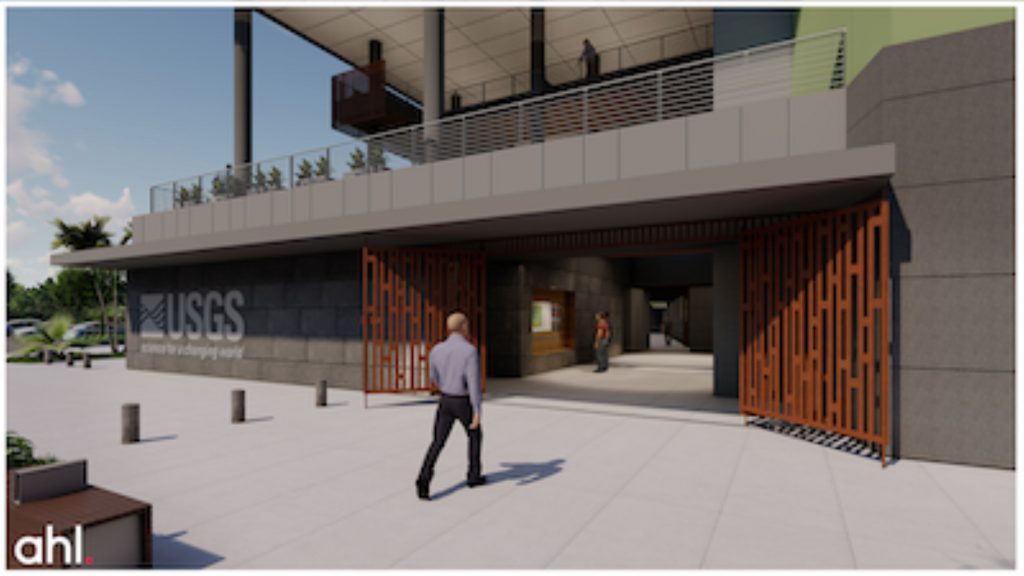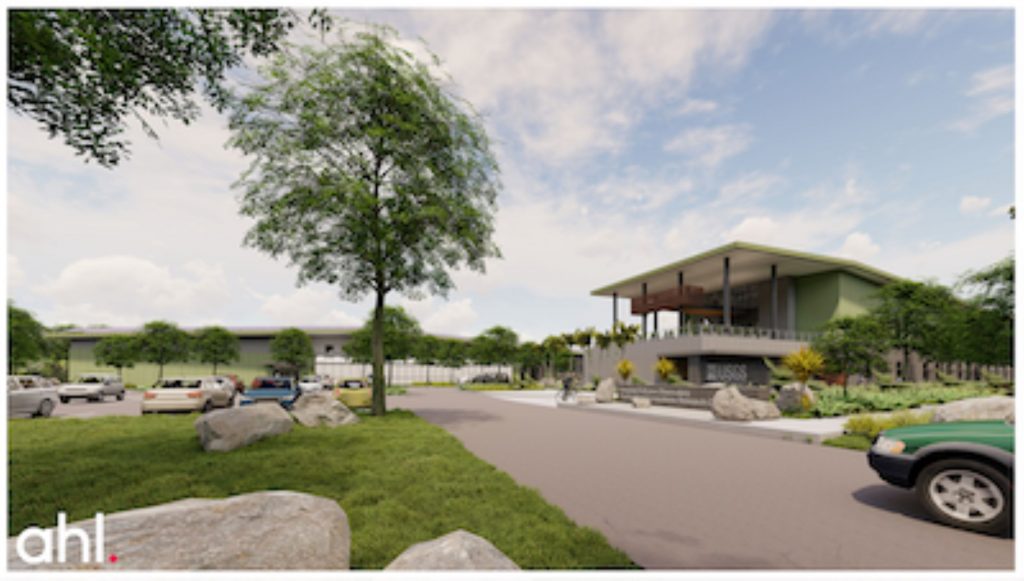U.S. Secretary of the Interior attends blessing at site of new Hawaiian Volcano Observatory
If Pele, the Hawaiian goddess of fire and volcanoes, can shape the land and break down barriers, “so can we,” No‘el Ka‘iako Tagab-Cruz said Wednesday in Hilo as she welcomed a large crowd that included U.S. Secretary of the Interior Deb Haaland.

“Let’s be innovative. Let’s be transformative just like her,” added Tagab-Cruz, associate professor of Hawaiian studies at the I Ola Hāloa Center for Hawai‘i Life Styles at Hawai‘i Community College.
While the crowd watched in silence during the kīpaepae, or traditional Hawaiian welcoming ceremony, the ‘āina (land) embraced them. A bright blue sky, lush greenery, singing birds and an occasional dragonfly zooming by provided the stage for chants, music and hula led by Tagab-Cruz.
Haaland was visibly moved by the ceremony, wiping tears from her cheeks as she spoke with participants that included students and staff of the U.S. Geological Survey and University of Hawai‘i.
The ceremony was part of a ground blessing event meant to prepare the land for a new U.S. Geological research facility on the Big Island that will house the Hawaiian Volcano Observatory and Pacific Island Ecosystems Research Center.
The facility will sit on 6.8 acres of state-owned land off Nowelo Street in Hilo, near the intersection with Komohana Street and on the campus of the University of Hawai‘i at Hilo.
Among the attendees were staff from the observatory and research center; county, state and other federal officials, including U.S. Sen. Brian Schatz of Hawai‘i; University of Hawai‘i officials, including President David Lassner; their staffs; students; and community members.
Following the kīpaepae, the ceremony moved just up the road to the U.S. Department of Agriculture Forest Service Institute of Pacific Islands Forestry.

The joint research facility will be the new permanent location for the Hawaiian Volcano Observatory, which monitors and assesses hazards from active volcanoes and earthquakes in Hawai‘i.
The observatory was forced to move from the place it had called home since the 1940s, near the rim of Kīlauea volcano in Hawai‘i Volcanoes National Park, because of structural damage to the facility caused by the partial collapse of the volcano’s summit during the 2018 Lower East Rift Zone eruption. Observatory staff has since worked out of multiple temporary locations.
The Pacific Island Ecosystems Research Center conducts research to support management and conservation of biological resources in Hawai‘i and other locations around the Pacific Ocean, including studies of imperiled species such as Hawaiian forest birds, invasive species and plant diseases such as rapid ‘ōhi‘a death. It has worked out of a location in the national park since the 1970s.
There was excitement in the air Wednesday as the ground blessing marks the beginning of the construction process for the new facility. It also will facilitate partnerships and collaboration with multiple agencies and institutions — including the University of Hawai‘i at Hilo — that might not have been possible before.
“Together, it will be amazing what we will be able to achieve,” said Susan Cordell, director of the Institute of Pacific Islands Forestry, in her opening remarks. “I want to be the first to welcome the [U.S. Geological Survey] to the hood.”

UH-Hilo Chancellor Bonnie Irwin is proud and grateful to host the new facility on campus, saying that the collaboration will carry knowledge forward — knowledge and wisdom that are intertwined in the relationships the agencies have with each other.
“UH-Hilo has a long and rewarding relationship with the Hawaiian Volcano Observatory and Pacific Island Ecosystems Research Center, and I am excited for the additional opportunities their presence on campus will have for research partnerships and student internships,” Irwin said. “Working side-by-side with professionals in the field is an invaluable complement to the education students receive at our university.”
The U.S. Geological Survey selected the site for the new facility because of its unique qualities and partnership opportunities, said David Applegate, the agency’s director.
“One quality in particular that is critical to our future success is access to a very precious resource: students who can become our next-generation workforce, helping bring science to bear on some of the most challenging issues facing our nation and the planet,” he said.
Applegate added that the new 60,000-square-foot building will include lab space and other facilities for about 100 staff members and, more importantly, be a place that can focus on the science of a changing world.
Schatz said Wednesday marked a milestone in providing the Hawaiian Volcano Observatory and Pacific Island Ecosystems Research Center with a facility that equals their contributions to the Big Island, Hawai‘i and nation.
Haaland said partnerships and collaboration are at the heart of everything the Department of the Interior and U.S. Geological Survey do.
“As we celebrate this facility today, we celebrate the enduring relationship it represents for the Department of the Interior and the community at large, as well as the benefits this partnership will bring long after our time doing this important work is done,” Haaland said.
The new facility will also provide continued community support to the Big Island and Hawai‘i as well as necessary emergency response capability. Construction is expected to be completed in late 2025.
“We have celebrated the ʻāina and now she can begin her transformation,” Tagab-Cruz said.
Sponsored Content
Comments






